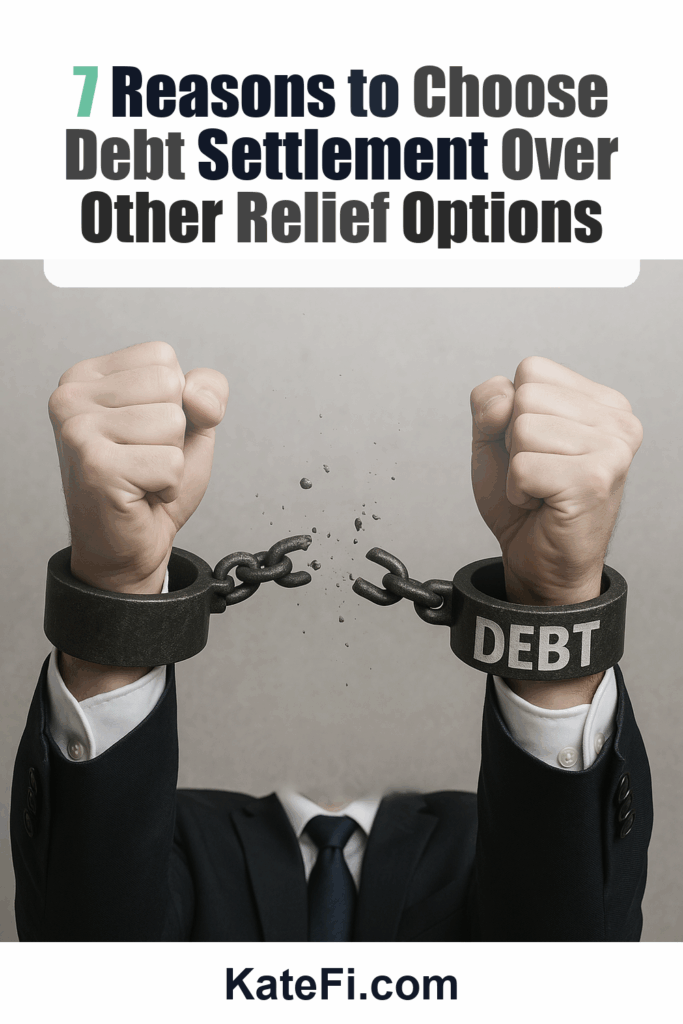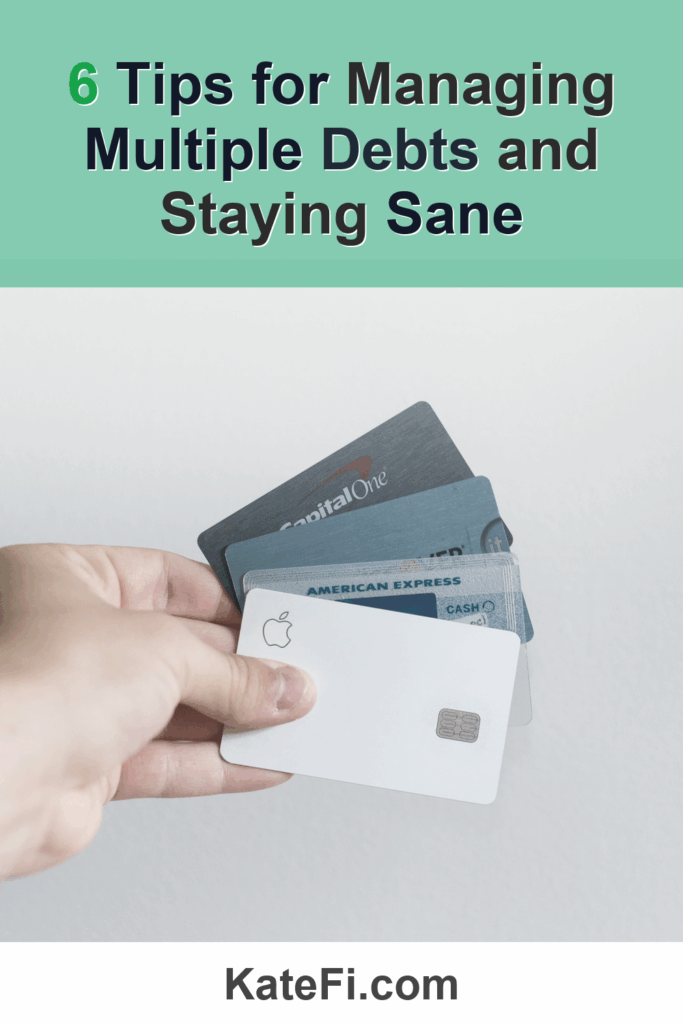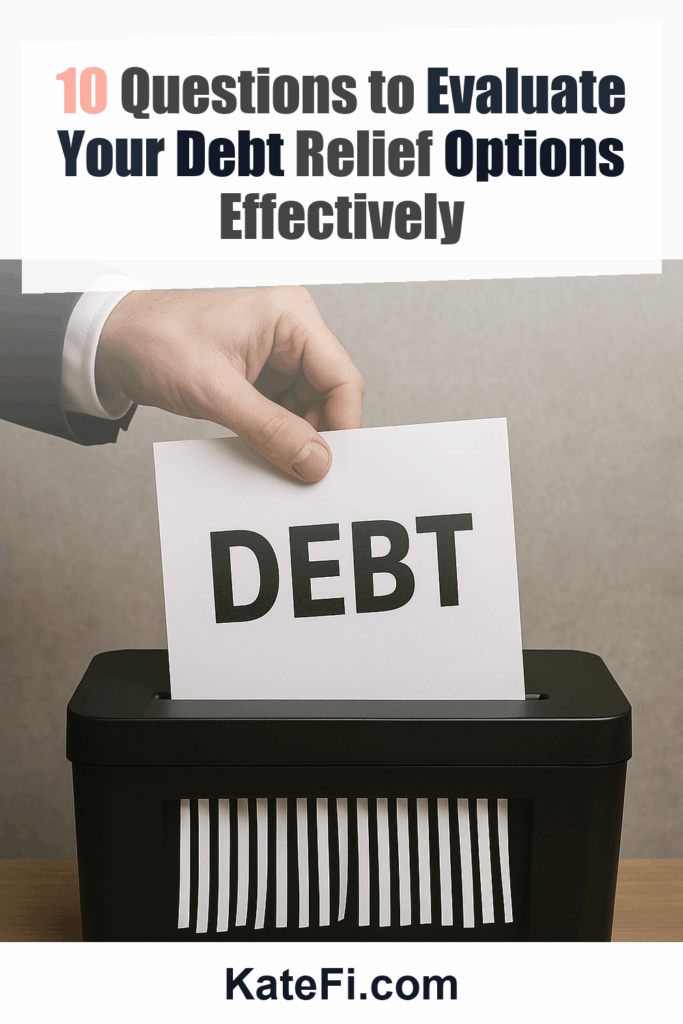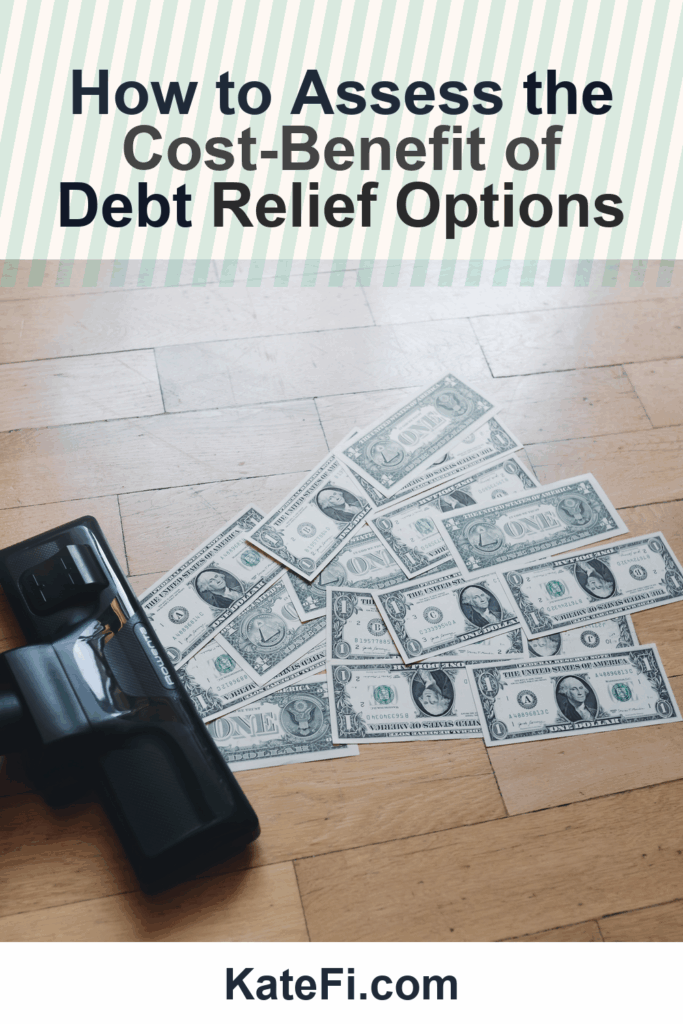10 Simple Steps to Start Budgeting for Debt Payoff
Managing debt can feel like climbing a mountain, especially when you don’t know where to start. The journey to financial stability begins with understanding your current situation and making a plan. With budgeting as a foundational tool, you can carve a clear path towards debt payoff. However, misinformation abounds when it comes to managing debt. Let’s tackle some common myths, outline practical steps for budgeting, and discuss how to avoid scams in the debt relief landscape.
Love our content? Show your support by following us — pretty please!🥺
FOLLOW ON PINTEREST
Hi! I’m Kate, the face behind KateFi.com—a blog all about making life easier and more affordable.
Myth vs. Fact: Debunking Common Misconceptions About Debt Relief
Understand pros/cons of settlement vs consolidation vs DMP for your exact mix of debts.
Not available in IL, KS, OR, TN, UT, WV.
- Myth: All Debt Relief Programs Are Scams
- Fact: While there are fraudulent companies out there, many legitimate debt relief programs, like those available at KateFi.com, can provide real assistance. Always do thorough research and consider a free consultation to explore your options.
- Myth: You Should Only Focus on Paying Off High-Interest Debt
- Fact: While high-interest debt is a priority, it’s also important to look at your overall financial health. Balancing your budget to manage multiple debts can help you stay afloat while making progress.
- Myth: A Credit Score Will Drop Significantly with Debt Relief
- Fact: While enrolling in a debt relief program can impact your credit score, it may ultimately help improve it over time by resolving your debt. A consultation can provide insight into potential outcomes based on your unique situation.
- Myth: You Should Avoid Talking to Creditors at All Costs
- Fact: Open communication with creditors can sometimes lead to better repayment terms. Negotiating can often alleviate financial pressure if you’re struggling to meet your obligations.
- Myth: Budgeting Means Living on Bare Necessities
- Fact: Budgeting is about prioritization, not deprivation. It’s possible to enjoy life while still managing your debt responsibly. A well-planned budget allows for leisure while keeping your financial goals in sight.
- Myth: Debt Relief Is Only for the Overwhelmed
- Fact: Anyone can benefit from understanding their financial landscape better. Whether you have a small amount of debt or a significant burden, learning to budget effectively can make a difference.
- Myth: Once You Start a Debt Relief Program, You’re Locked In
- Fact: Many programs allow for flexibility. You can assess your situation and even switch strategies if something isn’t working. Being proactive and informed will empower your decision-making.
Step 1: Gather Essential Documents
What You’ll Learn on the Call
- Estimated timeline and monthly payment range
- How credit may be affected in the short term
- What documents to gather to move faster
Not available in IL, KS, OR, TN, UT, WV.
Before diving into budgeting, prepare by gathering important financial documents. This will expedite your review process with debt relief experts and help clarify your financial situation.
Checklist of Documents to Gather:
- Recent pay stubs
- Monthly bank statements
- Credit card bills
- Loan statements
- Any other outstanding debt information
Once you’re organized, you can approach your finances with clarity and confidence.
Step 2: Assess Your Current Financial Situation
Lower Your Unsecured Debt
If you have $5,000+ in credit card or personal loan debt, a free consult can review options like settlement or hardship plans.
- One-on-one call to review your debts and goals
- See potential monthly payment reductions
- No obligation to enroll
Not available in IL, KS, OR, TN, UT, WV.
Understanding where you stand is crucial. Take a deep breath, sit down with your gathered documents, and create a snapshot of your financial picture.
Create a Financial Snapshot:
- Total monthly income
- List of monthly expenses (fixed and variable)
- Current debt balances and interest rates
A clear overview will reveal how much you can allocate toward debt repayment and where you might need to cut back.
Step 3: Create a Realistic Budget
With your financial snapshot in hand, you can start creating a budget that suits your lifestyle while allowing you to pay off debt.
Budgeting Tips:
- Categorize your spending (essentials vs. non-essentials).
- Set limits on discretionary spending to prioritize debt.
- Use budgeting tools or apps to keep track easily.
Remember, it’s about balance, not total denial of enjoyment.
Step 4: Prioritize Your Debts
With multiple debts to manage, prioritizing them is key. Consider the snowball vs. avalanche methods:
| Debt Payoff Method | Description |
|---|---|
| Snowball | Focus on paying off the smallest debt first while making minimum payments on larger debts. |
| Avalanche | Focus on paying off the debt with the highest interest rate first, saving you money in the long run. |
Both methods have their merits, so choose one that motivates you!
Step 5: Set Specific, Achievable Goals
Rather than vague objectives, establish clear, attainable goals. Instead of saying, “I want to pay off my credit card,” say, “I will pay off $200 on my credit card this month.”
Goal-Setting Tips:
- Break down larger debts into manageable chunks.
- Set monthly or quarterly goals.
- Celebrate small victories to keep your motivation alive.
Step 6: Track Your Progress Regularly
Keep an eye on your progress through consistent tracking. It helps identify what works and what doesn’t.
Tracking Tips:
- Use a spreadsheet or budgeting app.
- Compare your current progress against your goals.
- Adjust your budget and goals as necessary based on your findings.
Regular check-ins can provide motivation and help you stay committed.
Step 7: Explore Debt Relief Options
If you’re feeling overwhelmed, it might be time to explore debt relief options. You can consult professionals who can provide tailored advice based on your unique financial situation.
A free consultation with a debt relief expert can give you insights on your best options moving forward. Remember, being proactive is crucial in your debt relief journey!
✅ See If You Qualify for Debt Relief
Step 8: Avoid Common Scams in the Debt Relief Industry
With an increasing number of scammers targeting individuals in financial distress, it’s vital to know how to protect yourself.
Red Flags to Watch For:
- Promises of “quick fixes” or unrealistic outcomes.
- Requests for upfront fees before providing services.
- Lack of transparency in fees or processes.
- Pressure tactics to enroll in a program quickly.
Choosing a reputable service can make all the difference. Always verify credentials and reviews before proceeding.
Step 9: Maintain Communication with Creditors
Open dialogue with your creditors can lead to more manageable payment terms.
Communication Tips:
- Clearly explain your situation.
- Inquire about any hardship programs they may offer.
- Document all conversations for your records.
This transparency can sometimes lead to adjusted payment plans or even temporary payment suspensions.
Step 10: Stay Committed and Flexible
Your budgeting journey will have ups and downs. Stay committed, and if something isn’t working, adjust your approach.
Stay on Track:
- Revisit your budget monthly.
- Seek support from friends, family, or a financial advisor.
- Keep reminding yourself of your goals and why you started this journey.
Being adaptable is key to long-term success.
Understanding Credit Impact and Next Steps
It’s important to acknowledge that certain debt relief methods can impact your credit score. While this can be disheartening, remember that resolving debt can lead to a stronger financial future.
If you’re considering debt relief, be prepared for your consultation by having your financial documents ready and an open mind about possible solutions. You can pave the way for a more secure financial future with the right strategies.
Important: This content is for education only—not legal, tax, or financial advice. Results and eligible programs vary by situation and state. Fees apply if you enroll and complete a program. Debt relief can affect credit; missed payments may lead to collections/lawsuits. Not available in IL, KS, OR, TN, UT, WV.
In conclusion, budgeting for debt payoff doesn’t have to be overwhelming. By following these ten simple steps and being mindful of myths versus facts, you can take charge of your financial destiny. Don’t hesitate to seek out a professional consultation; the right advice could set you on a path to financial freedom.






















